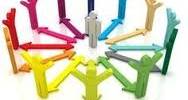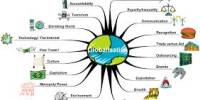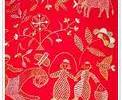Consumer Perception about Western Brands in Bangladesh
Over the years, brand promotional strategies and advertising techniques have changed radically; mostly to cope with the changes in how consumers view and perceive things and to stand out in the clutter of today’s advertising efforts. Marketers and creative agencies are increasingly moving away from the generic advertising methods which mostly included TV and Radio commercials, activation’s and in case of Bangladesh, a whole lot of billboards. While marketers are realizing the importance of differentiating not only in terms of their product USPs, but also in how they present and promote it to the consumers, it is actually the creative agencies that truly believe in the continual change of the advertising era. However, in a country like Bangladesh, change comes at a glacial pace. Advertising really hasn’t completely moved away or even “far away” from its conventional methods for that matter in our country. Creativity is nurtured and encouraged but very few clients can completely trust their agencies do come up with something ground breaking in their campaigns. Billboards, print ads and TVCs are still used significantly for a campaign whether or not they are required, and this happens mostly in cases where the client is head strong about its decision and doesn’t want to risk not adhering to the traditional mediums of marketing.
In a country like Bangladesh, exceptionally innovative ideas in marketing campaigns, especially guerilla advertising that is widely popular abroad, can be rarely implemented because clients feel out of zone and unsure about using them. But this client-agency gap doesn’t stop agencies from trying to come up with newer and more innovative marketing ways and pitching them to the client.
Ogilvy Bangladesh has been successful in getting its long term customers to trust in them to provide the best marketing and advertising solutions and stepping outside the box when it came to creative advertising. So I do have a good knowledge about how consumer responses & their tastes about the western brands in Bangladesh. This is a report regarding consumer’s perception of western brands, it will give you a clear view about how consumers build their perceptions on any particular brand or product, how it is affected and the impact of their perception in their purchasing behavior. To prepare this report both primary and secondary sources of data have been used in different aspects. A questionnaire has been made following a particular method which is called projective method and interviewed random general customers to know about their perception. The introductory part is actually developed for the proper implementation of the entire report. The remaining part of the paper actually consist the findings and analysis, managerial contribution and conclusion.
Introduction
The success of a business depends upon its ability to attract and retain customers that are willing to purchase goods and services at prices that are profitable to the company. Consumer perception describes how customers and potential customers view a company and its products and services. Consumer perception is important to businesses since it can influence consumer behavior, which ultimately affects the profitability of a business. So we can say that Consumer perceptions can determine the success or failure of a business.
Due to increased globalization the customer base is not limited to domestic market but also in international market. This requires managers to have better insight about consumer perception and behavior to predict the foreign market entry acceptance. Among many variables ethnocentrism and country of origin are two variables that worry many marketers for having influential effect on consumer perception. When the customer makes his buying decision, he evaluates the benefits he perceives from a particular product and compares them with the costs. The value a customer perceives when buying and using a product or service go beyond usability. There is a set of emotional values as well, such as social status, exclusivity, friendliness and responsiveness or the degree to which personal expectations and preferences are met. Similarly, the costs perceived by the customer, normally comprise more than the actual price. They also include costs of usage, the lost opportunity to use another offering, potential switching costs etc. Hence, the customer establishes an equation between perceived benefits and perceived costs of one product and compares this to similar equations of other products.
However, no research has been done on Bangladeshi consumers about their perception regarding western brands; their usage and refusal of western brands. As a result, this research will investigate consumer insight using qualitative method and projective techniques through few questioner and research.
Objective:
The core objective of this report is finding the consumer perception about the western brands in Bangladesh.
- Consumer expectation towards this western brands
- How do the consumer sees this brands
- How consumer perception has an impact on their purchasing behavior contributing to the usage or repudiation of the western brands
- Influences on consumer perception about western brands
- Importance of knowing the consumer perception
- Observations, buyers settle on buy choices prompting the utilization and refusal of numerous brands
- To find out the consumer segmentation
Mythology:
The report progression is showed below:
- Initially, the topic and research objective was selected.
- The sources of data were determined next.
- Qualitative data was then collected from third person expression technique, and dream elicitation technique and everyday learning during the internship attachment.
- Qualitative portion of the report was written first, where mainly campaigns and cases of consumer perception about the western brands were discussed to show how they are important and why.
- Projective techniques are a form of qualitative technique involving indirect form of questioning that encourages the respondents to reveal their underlying motivations, beliefs, attitudes or feelings regarding the issues of concern.
- Both primary data and secondary were collected.
- Primary data is the data collected through the respondents by performing in depth session and secondary from books, newspapers, some articles and web sites.
- I have prepared a questionnaire for the respondents to know their perceptions about western brands.
- Thematic analysis was done to find out some key factors which were related to the study and were also satisfying the purpose of the research
- Classification, analysis, interpretation and presentation of data.
- Findings of analysis.
- Collection of relevant and supporting material.
- Final report preparation and compilation.
Consumer Perception:
A marketing concept that incorporates a consumer’s impression, mindfulness as well as cognizance around an organization or its offerings. Customer perception is regularly influenced by publicizing, surveys, open connection social networking, individual encounters and other channel.
Consumer Perception about Western Brands in Bangladesh
Country of origin is used as a signal for product quality. It has a typical and enthusiastic vale to consumers. Moreover, consumer hold social and personal norm related to this. Therefore, country of origin and its influence in shaping consumer attitude has been an interest of scholars for many years.
Consumer perception of the word “brand” is usually associated with quality. In the western world, with the assortment and alternatives accessible, it is the idea of brands that help buyers interpret and match their needs to that of the items accessible in the business. Asian nations, specially our Bangladesh, use different sensibilities as opposed to just depending on quality. The slant of most Asian countries to their society is inalienable to their lifestyle and it is the same concerning our variant of “retail theory.”
Brands might be local or foreign. Each consumer holds distinctive discernments about brands. Taking into account the observations, buyers settle on buy choices prompting the utilization and refusal of numerous brands.
Overview of Consumer Culture in Bangladesh
Brands have developed both as socially paramount images that offer counterweight to consumer’s identity ventures and as gadgets that bring points of interest to their lawful owners.in both these regards, the investigation of brands has turned into a matter of focal concern to showcasing researchers far and wide.
Bangladesh, a developing country in the Asia region, has been developing quickly. With a GDP development of around 6%, Bangladesh are on the post position to lead the ascent of Asian region later on. The impact of such growth has been seen in the lives of general consumers too. Earlier where branded consumer products were seen as luxury products and poised an upper class image, it has recently become a need, and also a product for the mass. Customer perceptions are influenced by a variety of factors. And consumer buying culture is one of them.
However the origin of the culture affects the consumer attitude, behavior, beliefs, values, attitudes and every aspect of the consumer which automatically enforce the marketer to develop and plan the marketing strategy accordingly.
Bangladesh, having an enormous basket of population, moreover got a tag of ‘developing country’ many decades ago which really can’t assist expect anybody to gauge its economic or improvement circumstance. Its 39 % population live below the poverty line (World Bank Report: 2011) which also can’t help anyone to perceive its adverse condition, but it is perceivable this specific portion surely lies at Bottom of Pyramid (BOP) Segment, who can’t afford their minimum life requirements. And it doesn’t mean people of this segment are dying for scarce of food, rather they can afford minimum life expectation consuming necessary little goods and services. And the other 61% population enjoy more living standard in case of product/service consumption, but all of them don’t live at ‘Upper level of the pyramid’ rather they possess little difference with the BOP segment because their income distribution curves little. It is estimated that around 5% of the total population lies in ‘Upper level of the pyramid’ and the rest 95% lays in middle and Bottom of the economic pyramid. However Bases of customer segmentation of Bangladesh including- where they lives or resides, their age, gender, race, income, family size, life cycle stage, geographic location, lifestyle, how much they can buy or occasion of buying, what benefits they want etc.
To identify the buying behavior of a Bangladeshi customer is very difficult subject. So far we have seen a customer’s buying behavior in Bangladesh is influenced by four factors cultural, social, personal and psychological factors which correlate with satisfaction behaviors. The level of satisfaction can also vary depending on other options the customer may have and other products against which the customer can compare the organizations product. Here culture, subculture and social classes both are particularly important in buying behavior or pattern. In additional to cultural factors a customer’s behaviors influence by such social factor like Upper, Middle and Lower.
Moreover there are few personal factors like Occupation, Economic circumstance, Life Style, Personality & Self-confidence which effects buying pattern. And buyers choice also influence by some psychological factors like Motivation, Perception, Learning, Beliefs and Attitudes.
Now customer satisfaction has become one of the major concern in Bangladesh. There’s more to customer satisfaction than customer service. Now-a-days it is becoming one of the major issues among all. If a customer is satisfied that means that a product of service has met his expectations and that he was not dissatisfied by it. Customer satisfaction is doubtlessly very important. It is the precondition for repeat purchases and it prevents the customer from telling others about his disappointing experiences. A loyal customer, however, is more than a customer who frequently purchases from a company. So businessmen and all the big companies are more likely focusing on this specially the global companies. It completely depends on how they are ensuring the product quality, competitive price and most importantly after sells services. Because of this reason the telecom companies in Bangladesh are more focusing on after sells services. Through their call center they reach to their customer, solve customer’s problems also takes feedbacks for further betterment. Not only the telecoms now all the westerns companies concentrating on this.
Variations in customers like and dislike, the cognitive growth and motivation force them to act in various ways in purchasing clothing’s products (Lalitha. A, Ravikumar, J.and Padmavali, K., 08) Consumer’s buying behavior in Bangladesh is divergent and situational. Individual may not act in the same way always, customers act consistently and we have tried to figure out the customers in below groups according to their buying behavior.
- A habit – determined group of brand loyal consumers who tend to be satisfied with the product or brand last purchased.
- A price – cognitive group of consumers who decide principally upon the basis of price or economy comparison.
- Group of customers who emphasize on products quality like design, style, raw materials etc.
- Group of customers who buy products being attracted on aesthetic and functional properties of those products
- A cognitive group of consumers who are sensitive to rational claims.
- An impulse group of consumers who buy on the basis of physical appeal and are relatively insensitive to brand name.
- A group of emotional reactors who respond to product symbols and are heavily swayed by images.
- A group of new consumers who haven’t yet stabilized the psychological dimensions of their behavior
It is important to know the customers buying behavior process and customer’s requirements properly. The brand developer should develop and place the products accordingly to the customer and that will help in sustainable apparel products development as well as better business performances.
The process of sustaining the brand image is an ongoing process which marketers have to take into consideration. This may pose to be a similarity between nations all over the world when it comes to the brand that they refer to in the local and international context, whereby the continued popularity of a particular item in comparison to the many available in the market must be sustained.
To ensure sustainability of the brand, the companies must avoid controversies that may arise from their products, image, leadership, the company itself or their `how side’ of doing business. Thus, cultural practices, quality and preferences, the need for familiarity and unrelenting image building gives an acute understanding to the power of brands in our consumer societies.
Western Brands in Bangladesh
There a huge number of western brands who are already doing business in Bangladesh very successfully. Hence Bangladesh is a developing country with a mass population so many other foreign brands are showing interest is enter in Bangladeshi market. In fact the existing western brands is making huge profit with a big turn over in every month. Few giant companies like Unilever, Honda, Yamaha & so on are planning to establish their own plant here in Bangladesh which is really a very opportunity for Bangladesh.
Western brands or companies in Bangladesh are playing a vital role in the socio-economic development of the country. They are increasing the annual revenue with an upward trend. And they are contributing in the development of the society to a large extent. Their gain is the country’s gain.
Before entering to this market every western brands should have gathered mass information on people acceptance, their demand, income, likings, their culture, market segmentation, expending pattern and their expectation. Otherwise that brand might not continue in long run. Here are details of the top group of companies in Bangladesh that are,
Unilever Bangladesh:
“We meet every day needs for nutrition, hygiene and personal care with brands that help people feel good, look good and get more out of life.”
UBL started its journey in Bangladesh with the production of soaps in its factory in Kalurghat, Chittagong. Unilever Bangladesh (UBL) is the leading Fast Moving Consumer Goods Company in Bangladesh with a heritage of 50 years and products that are present in 98% of Bangladeshi household. Over the years the company introduced many affordable brands which won the hearts of Bangladeshis all across the country. Today we are present with our brands in almost every household of the country. UBL is the market leader in 7 of the 8 categories it operates in, with 20 brands spanning across Home and Personal Care and Foods. Its operations provide employment to over 10,000 people directly and indirectly through its dedicated suppliers, distributors and service providers. 99.8% of UBL employees are locals with a large number of local UBL employees now working abroad in other Unilever companies as expatriates.
Unilever brands are trusted everywhere and, by listening to the people who buy them, they’ve grown into one of the world’s most successful consumer goods companies. In fact, 150 million times a day, someone somewhere chooses a Unilever product. UBL have a portfolio of brands that are popular across the globe – as well as regional products and local varieties of famous – name goods. This diversity comes from two of their key strengths: Strong roots in local markets and first – hand knowledge of the local culture. World – class business expertise applied internationally to serve consumers everywhere.
Unilever’s mission is to add Vitality to life and their vision is to make cleanliness a commonplace; to lessen work for women; to foster health and contribute to personal attractiveness, in order that life may be more enjoyable and rewarding for the people who use the products.
Perfetti Van Melle Bangladesh Pvt. Ltd:
Perfetti Van Melle is a privately held Italian global manufacturer of confectionery and gum. It is third largest confectionery manufacturer in the world. It was formed in 2001 with the acquisition of Van Melle of the Netherlands, by the Italian group Perfetti of Italy and having its corporate headquarters in Lainate (Milan), Italy. Perfetti Van Melle bills itself as the third largest confectionery manufacturer in the world after Kraft Foods and Mars, Incorporated. It employs 17,000 people via 30 subsidiary companies and distributes its products in over 130 countries. Perfetti Van Melle develops, manufacture and market high-quality and innovative products for consumers through the efficient use of resources and in collaboration with the business partners.
- Create a fulfilling workplace for the employees built on trust, mutual respect, and appreciation of their diversity
- Value the role we play in communities, as a socially and environmentally committed organization;
Generate economic value through superior growth and profitability British American Tobacco Bangladesh:
British American Tobacco Bangladesh is one of the biggest multinational organizations in the Bangladesh and has been working in excess of 100 years. They are part of the British American Tobacco Group, the world’s most international tobacco group with brands sold in more than 180 markets. They have over 1,000 employees and they take pride in being one of the preferred employers in Bangladesh. They have responsibility towards their shareholders, employees, business partners, customers and any other stakeholders. BAT Bangladesh is listed on both Dhaka and Chittagong Stock Exchanges and is currently ranked as number 1 (one) amongst the listed companies in Bangladesh in terms of being the highest taxpayer (BDT 8,436 crores paid in the last year). BAT Bangladesh has and will continue to value relationship with the Bangladesh Government, shareholders and other stakeholders of the Company by practicing the best corporate governance They believe in “success and responsibility go together”.
They make high quality tobacco products for the diverse preferences of consumers, spanning the business ‘from crop to consumer’ and they are also committed to embedding the principles of corporate social responsibility group wide. BAT uses freedom to take decisions and act in the best interest of consumers. They respect and celebrate each other’s differences and enjoy working together. Their harness diversity of our people, cultures, viewpoints, bronds, markets and ideas to strengthen our business and them also value what makes each of them unique and innovative.
Grameenphone Bangladesh:
Launched in 1997, Grameenphone is the market leader in telecommunication service providing industry in Bangladesh with more than 46.04 million subscribers (as of September, 2013). Grameenphone is the leading company in the mobile telecommunication industry of Bangladesh. It has been successful to build a superior image in comparison to the other operators. In other words, GP has a clear advantage over the competitors.
Grameenphone has some additional features in comparison to its competitors. It is playing a vital role to increase the subscribers of Grameenphone. Another important thing is that GP users are mostly satisfied with the initial price of GP connections and hand-sets. Because, before GP’s introduction to the market, mobile phones were totally out of reach to the major part of the current market. Moreover, Grameenphone subscribers are happy with the country-wide network. Grameenphone promises you to bring the best of communication technologies so that you can Go Beyond.
Their Vision is, “We Empower societies. We provide the power of digital communication, enabling everyone to improve their lives, build societies and secure a better future for all.”
And their Mission is, “We’re here to help our customers. We exist to help our customers get the full benefit of being connected. Our success is measure by how passionately they promote us.”
Nestlé Bangladesh:
In Bangladesh, Nestle began its operation in 1994 and its manufacturing plant is situated in Sreepur, Gazipur and the origin company was founded in 1866 by Henri Nestlé in Vevey, Switzerland Nestle. Bangladesh directly employs more than 650 people and more than 1000 people are employed by suppliers and distributors in connection to Nestlé.
Their mission of ‘Good Food,Good Life’ is to provide consumers with the best tasting, most nutritious choices in a wide range of food and beverage categories and eating occasions, from morning to night. Their existing products in Bangladesh market are Nido, Nescafé, Maggi noodles and soup, breakfast Cereals, Coffee-Mate, Nestea, Nesfruta, Nesfrappe and so no.
Nestlé Bangladesh Limited started its commercial operation in Bangladesh in 1994. Its total authorized capital is TK1.5 billion and total paid up capital is TK 1.1 billion. The only factory of the company in Bangladesh is situated at Sreepur, 55 km north of Dhaka. The factory produces the instant noodles and cereals and repacks milks, soups, beverages and infant nutrition products.
Today Nestlé Bangladesh Ltd. is a strongly positioned organization. The Company is continuously growing through the policy of constant innovation, concentrating on its core competencies and its commitment to high quality food to the people of Bangladesh.
In Bangladesh Nestlé’s vision is to be recognized as the most successful food and drink Company in Bangladesh, generating sustainable, profitable growth and continuously improving results to the benefit of shareholders and employees.
Findings
I have collected data from random people doing qualitative research and following the projective method. After taking in depth session of different customers concerning about western brands, I have found out the reasons that actually have an influence on the perception of Bangladeshi customers regarding all the western branded products. Brands influence has a huge impact on the consumer, few are comfortable with the brand he or she is using, few find the brand they use is reliable and I also found few customer how are interested or concerned to migrate their current brands and accept new brands. Then again it depends on few things like previous brand background, brand existing, brand reliability, brand competitive pricing, brand service, brand products quality and brand name itself. I also have come out with some melodies that I think are related with the projective data method. These includes, the definition of the term ‘brand’, the influence of different sources such as word of mouth, friends and family, media (TV, newspaper, radio), social networking site (Facebook, Twitter, Google Plus), factors looked by consumers before obtaining western branded products, patriotic customers, brand loyalty. Consumers also gets or catch information through shop branding, billboards, POP, POS materials. There is common scenario in such cases like, the brand which is more interactive to consumer or communicate the most gets the height exposer. Based on this issues consumer builds a strong perception about that particular western brand insides them.
Limitations of the Study
I have given my full effort to prepare the job which I was assigned for, but still while doing the presentation I have faced few challenges and difficulties.
First of all the method I used (projective method) to collect the data from the consumer was completely new to me. So when I was preparing the questioner for testing the consumer perception
I found it really difficult and when I gave it the respondent they couldn’t even understand it too. So I had to make them understand what exactly I want to know from them and about their perception part. Moreover it was really difficult to convince them to take their valuable time for my questioner fill-up purpose. Lack of practical experience resulted more time consumption in doing each work for the report and unable to conduct group discussions for collecting primary data for report accuracy. To collect the secondary data was very challenging too. Because I had go through a lot of articles, books & web sites to collect the related data hence all information was not relevant to my report. Then again I had to check back its validity and compiling all the data in proper order.
Last of all it was a big and very good project but I couldn’t get enough time to prepare the report. Still I tried my best to cover everything.
Conclusion
Consumer perception plays an important role because it affects their purchasing behavior as well as their perception regarding foreign and local branded products, whether positive or negative. Thus perception of consumers affecting purchasing behavior contributes to the usage and refusal of many foreign branded products. Based on the research, it has been found that perception of Bangladeshi consumers about local and foreign branded product does vary among individuals and has great influence in their purchasing behavior
Last of all it has been a true privilege to work as an intern in an organization like Ogilvy & Mather, which is one of the pioneers of advertising in Bangladesh and even today the agency is a juggernaut of Bangladesh’s advertising industry. While working for Ogilvy & Mather I have had to work with several brands so that I could develop my brand building knowledge. Working in such a diverse environment has given me such experience that I can carry forward in the future as I develop my career.
















